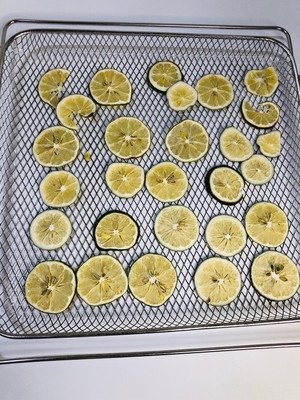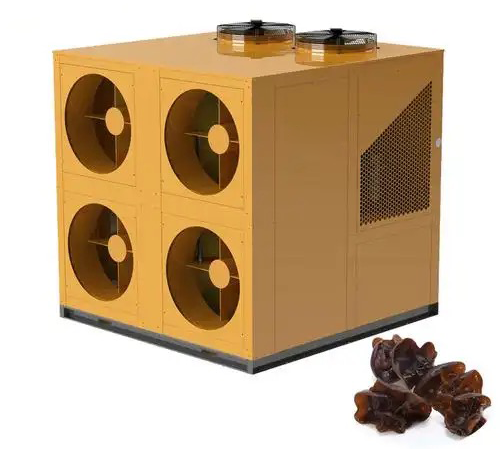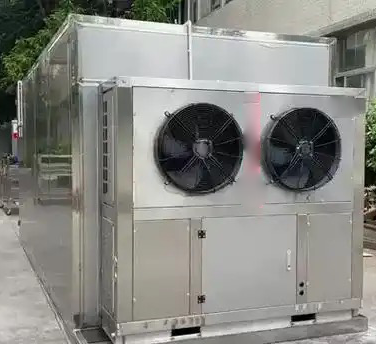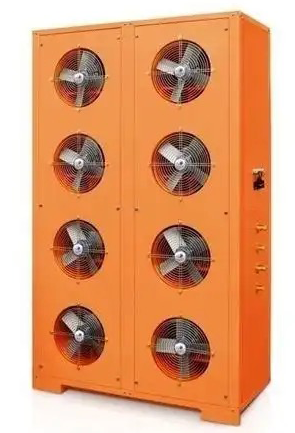
Content Menu
● Introduction
● What is a Small Heat Pump Dryer?
>> How Does a Small Heat Pump Dryer Work?
● Benefits of Using Small Heat Pump Dryers for Food Dehydration
>> 1. Energy Efficiency
>> 2. Nutritional Preservation
>> 3. Versatility
>> 4. Compact Design
>> 5. Environmentally Friendly
● How to Choose the Right Small Heat Pump Dryer
>> Capacity
>> Features
>> Brand Reputation
>> Price
● Tips for Effective Food Dehydration Using Small Heat Pump Dryers
>> Common Mistakes to Avoid
● Applications of Small Heat Pump Dryers in Various Industries
>> Home Use
>> Commercial Use
>> Agricultural Use
>> Herbal Medicine Production
● Innovative Features in Modern Small Heat Pump Dryers
● Case Studies: Success Stories with Small Heat Pump Dryers
>> Case Study 1: Local Snack Producer
>> Case Study 2: Organic Farm
● Conclusion
● Related Questions
>> 1. What Types of Foods Can Be Dried Using a Small Heat Pump Dryer?
>> 2. How Long Does It Take to Dehydrate Food with a Small Heat Pump Dryer?
>> 3. Are Small Heat Pump Dryers Noisy During Operation?
>> 4. Can I Use a Small Heat Pump Dryer for Commercial Purposes?
>> 5. What Maintenance Is Required for Small Heat Pump Dryers?
Introduction
Food dehydration is an age-old preservation method that has gained renewed popularity in recent years due to its health benefits and convenience. As a leading manufacturer of food drying machines in China, we specialize in providing OEM services for international brands, wholesalers, and producers. This article will explore the advantages of using small heat pump dryers specifically designed for food dehydration. We will delve into their efficiency, energy savings, and how they compare to traditional drying methods.

What is a Small Heat Pump Dryer?
A small heat pump dryer is a compact appliance that utilizes heat pump technology to remove moisture from food products. Unlike traditional dryers that rely on high temperatures and direct heat, heat pump dryers operate at lower temperatures, making them ideal for preserving the nutritional value and flavor of food.
How Does a Small Heat Pump Dryer Work?
The process involves several key steps:
1. Air Intake: The dryer draws in ambient air.
2. Heat Exchange: The air passes through an evaporator coil, where it absorbs moisture from the food.
3. Heating: The moisture-laden air is then heated using a refrigerant.
4. Condensation: The moisture condenses into water and is collected, while the dry air is circulated back into the drying chamber.
5. Repeat Cycle: This cycle continues until the desired dryness level is achieved.
Benefits of Using Small Heat Pump Dryers for Food Dehydration
1. Energy Efficiency
Small heat pump dryers are known for their energy efficiency. By operating at lower temperatures and recycling heat, they consume significantly less energy compared to traditional drying methods. This not only reduces operational costs but also minimizes environmental impact.
2. Nutritional Preservation
The gentle drying process helps retain essential vitamins and minerals that can be lost in high-temperature drying methods. This makes small heat pump dryers an excellent choice for health-conscious consumers who want to maintain the nutritional integrity of their foods.
3. Versatility
These dryers can handle a wide variety of foods, including fruits, vegetables, herbs, and meats. Their adjustable settings allow users to customize the drying process based on the specific requirements of different foods.
4. Compact Design
Ideal for small kitchens or commercial spaces with limited room, small heat pump dryers are designed to fit seamlessly into any environment without sacrificing performance.
5. Environmentally Friendly
By using less energy and producing minimal waste, small heat pump dryers are a more sustainable option compared to conventional dehydrators.
How to Choose the Right Small Heat Pump Dryer
When selecting a small heat pump dryer for your needs, consider the following factors:
Capacity
Choose a model that fits your production volume. Smaller units are suitable for home use or small businesses, while larger models can accommodate higher output.
Features
Look for features such as adjustable temperature settings, timers, and humidity control to enhance your drying experience.
Brand Reputation
Opt for reputable brands known for quality and reliability in food drying technology.
Price
Consider your budget while ensuring that you invest in a machine that meets your quality standards.
Tips for Effective Food Dehydration Using Small Heat Pump Dryers
1. Pre-Treatment: Some foods may benefit from pre-treatment (e.g., blanching vegetables) to enhance flavor and color retention.
2. Uniform Slicing: Cut food items into uniform sizes to ensure even drying.
3. Spacing: Avoid overcrowding the drying trays; proper airflow is crucial for effective dehydration.
4. Monitoring: Regularly check on the drying progress to avoid over-drying or under-drying.
5. Storage: Store dehydrated foods in airtight containers to maintain freshness.
Common Mistakes to Avoid
- Ignoring Moisture Content: Not all foods have the same moisture content; understanding this can help you set appropriate drying times.
- Using Incompatible Foods Together: Some foods dry faster than others; mixing them can lead to uneven results.
- Not Cleaning Regularly: Neglecting regular maintenance can affect performance and hygiene.

Applications of Small Heat Pump Dryers in Various Industries
Home Use
For home cooks and health enthusiasts, small heat pump dryers offer an excellent way to create healthy snacks like dried fruits and vegetable chips without preservatives or additives.
Commercial Use
In commercial settings, these dryers are invaluable for businesses involved in producing dried fruits, herbs, or snacks. They enable efficient processing while maintaining product quality.
Agricultural Use
Farmers can utilize small heat pump dryers to preserve surplus produce during harvest seasons, reducing waste and ensuring year-round availability of their products.
Herbal Medicine Production
In herbal medicine production, maintaining the integrity of herbs is crucial. Small heat pump dryers ensure that medicinal properties are preserved during the drying process.
Innovative Features in Modern Small Heat Pump Dryers
As technology advances, modern small heat pump dryers come equipped with innovative features:
- Smart Controls: Many models now offer smart technology integration that allows users to monitor and control the drying process remotely via mobile apps.
- Energy Monitoring Systems: These systems provide real-time data on energy consumption, helping users optimize their operations further.
- Multi-Functionality: Some units combine dehydrating functions with other cooking methods like baking or roasting, providing versatility in one appliance.
Case Studies: Success Stories with Small Heat Pump Dryers
Case Study 1: Local Snack Producer
A local snack producer switched from traditional dehydrators to a small heat pump dryer. They reported a 30% reduction in energy costs while improving product quality by retaining more nutrients in their dried fruit snacks.
Case Study 2: Organic Farm
An organic farm implemented small heat pump dryers during peak harvest season. They successfully preserved excess produce without compromising quality, allowing them to sell dried products year-round at farmers' markets.
Conclusion
Small heat pump dryers represent a significant advancement in food dehydration technology, combining energy efficiency with superior preservation of nutritional value. As a manufacturer dedicated to providing high-quality OEM services in this field, we understand the importance of selecting the right equipment for optimal results. By choosing a small heat pump dryer tailored to your needs, you can enjoy delicious dehydrated foods while minimizing environmental impact and maximizing savings on energy bills.

Related Questions
1. What Types of Foods Can Be Dried Using a Small Heat Pump Dryer?
Small heat pump dryers can effectively dehydrate various foods such as fruits (apples, bananas), vegetables (carrots, tomatoes), herbs (basil, oregano), and even meats (beef jerky).
2. How Long Does It Take to Dehydrate Food with a Small Heat Pump Dryer?
The drying time varies based on the type of food and its moisture content but typically ranges from several hours to over a day for larger batches.
3. Are Small Heat Pump Dryers Noisy During Operation?
Most small heat pump dryers operate quietly compared to traditional dehydrators or ovens, making them suitable for home use without causing disturbances.
4. Can I Use a Small Heat Pump Dryer for Commercial Purposes?
Yes, many models are designed for both home and commercial use, providing flexibility depending on your production needs.
5. What Maintenance Is Required for Small Heat Pump Dryers?
Regular cleaning of filters and trays is essential to maintain efficiency and hygiene. Additionally, periodic checks on components will help ensure long-term functionality.












